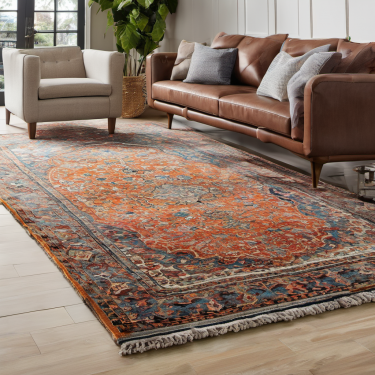8 Misconceptions about Carpet and Health
Home » Green Carpet Blog » Carpet Care » 8 Misconceptions about Carpet and Health


We’ve all heard them – claims that carpet can exacerbate this health problem, or that it can cause another health problem. There are tons of such claims out there, but most of them are simply untrue. Here’s a look at eight of the most common misconceptions about carpet and health.
1. CARPETING CAUSES ASTHMA
Most of us have heard this one before – that carpets can lead to asthma. There is actually no scientific evidence of such, despite significant research into the issue.
2. CARPETING MAKES ALLERGIES WORSE
This one has a grounding in truth – carpeting can trap allergens. However, that’s actually a good thing for allergy sufferers, as it removes those allergens from the air. In this way, carpet acts like a filter. Vacuuming regularly removes the allergens from the carpet, allowing it to capture more. However, if the carpet is not maintained properly, allergens can become an issue because the “filter-like” qualities of the carpet are diminished. However, this is the homeowner’s responsibility, not a failing of the carpet.
3. CARPETING EMITS HARMFUL VOCS
All manmade materials emit VOCs (volatile organic compounds) to some extent, and yes, carpet does as well. However, the amount of VOCs released by carpet is far less than most other home furnishings. In fact, VOCs may only be released for about 24 hours after carpet installation, and can be reduced even more with proper ventilation.
4. CARPETING EMITS HARMFUL FORMALDEHYDE
This is actually not true at all. It applies to furniture manufacturing, not to carpet manufacturing. Formaldehyde is not emitted from carpeting, because this chemical is not used in the making of carpet.
5. CARPET CAUSES INDOOR AIR QUALITY PROBLEMS
This claim is untrue. Significant testing has been conducted in the US, in Sweden, and in other nations, and no health risks of concern have been found.
6. LATEX IN CARPET CAUSES ALLERGIES
Again, this claim is untrue. This is because the latex used to bind carpet fibers together is synthetic, not natural. Synthetic latex is hypoallergenic, whereas natural latex is an allergen.
7. CARPET IS AN IDEAL BREEDING GROUND FOR DUST MITES
Carpeting is actually far from being an ideal breeding ground for dust mites due to its low levels of moisture and its lower temperature. Even if dust mites did breed within carpeting, the fibers act as a filter, trapping dust mite debris and preventing it from aggravating allergies.
8. CARPET CAN BREED MOLD AND MILDEW
Yes, carpets can breed mold and mildew, but that requires a source of moisture, such as a leaking pipe, or regular spills of water. Those issues will be present regardless of the flooring type, and mold and mildew can grow on any surface given enough moisture.
As you can see, carpet is one of the safer flooring options for your home. Modern research has actually found that it may be less harmful to your health than many types of hard flooring, which do emit high levels of VOCs, as well as plasticizers and other chemicals.


Categories
Carpets
Oriental Rug



